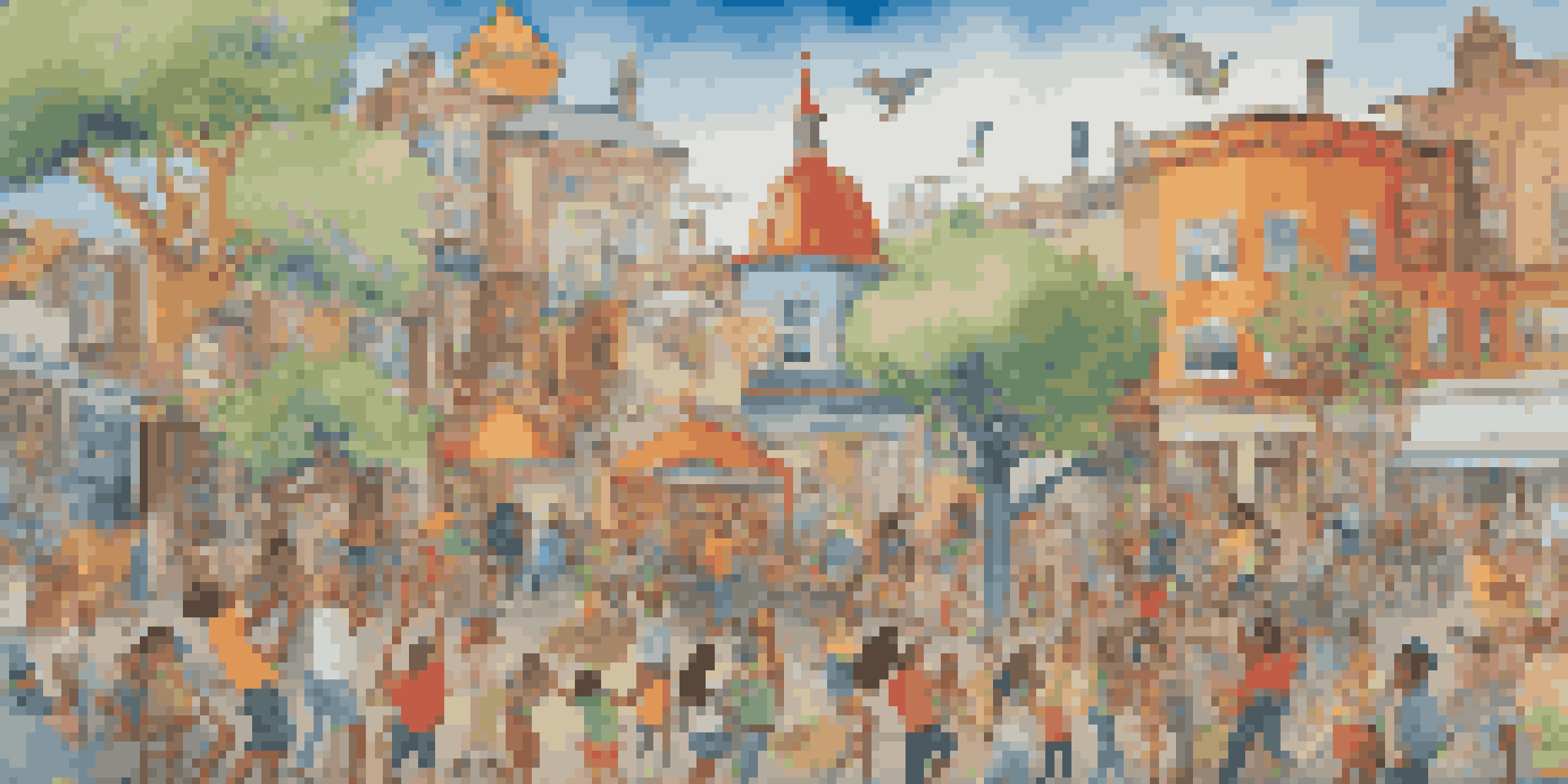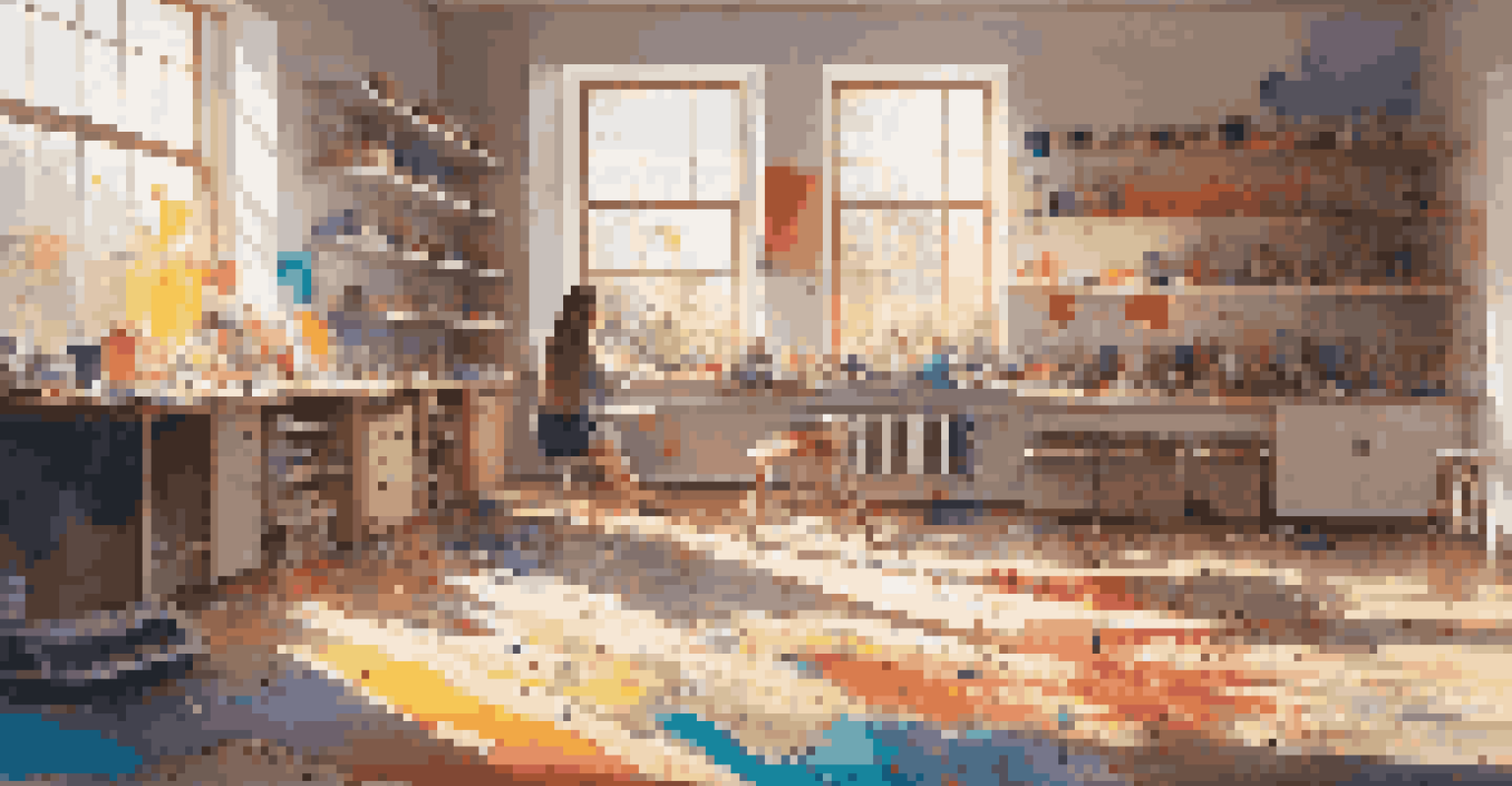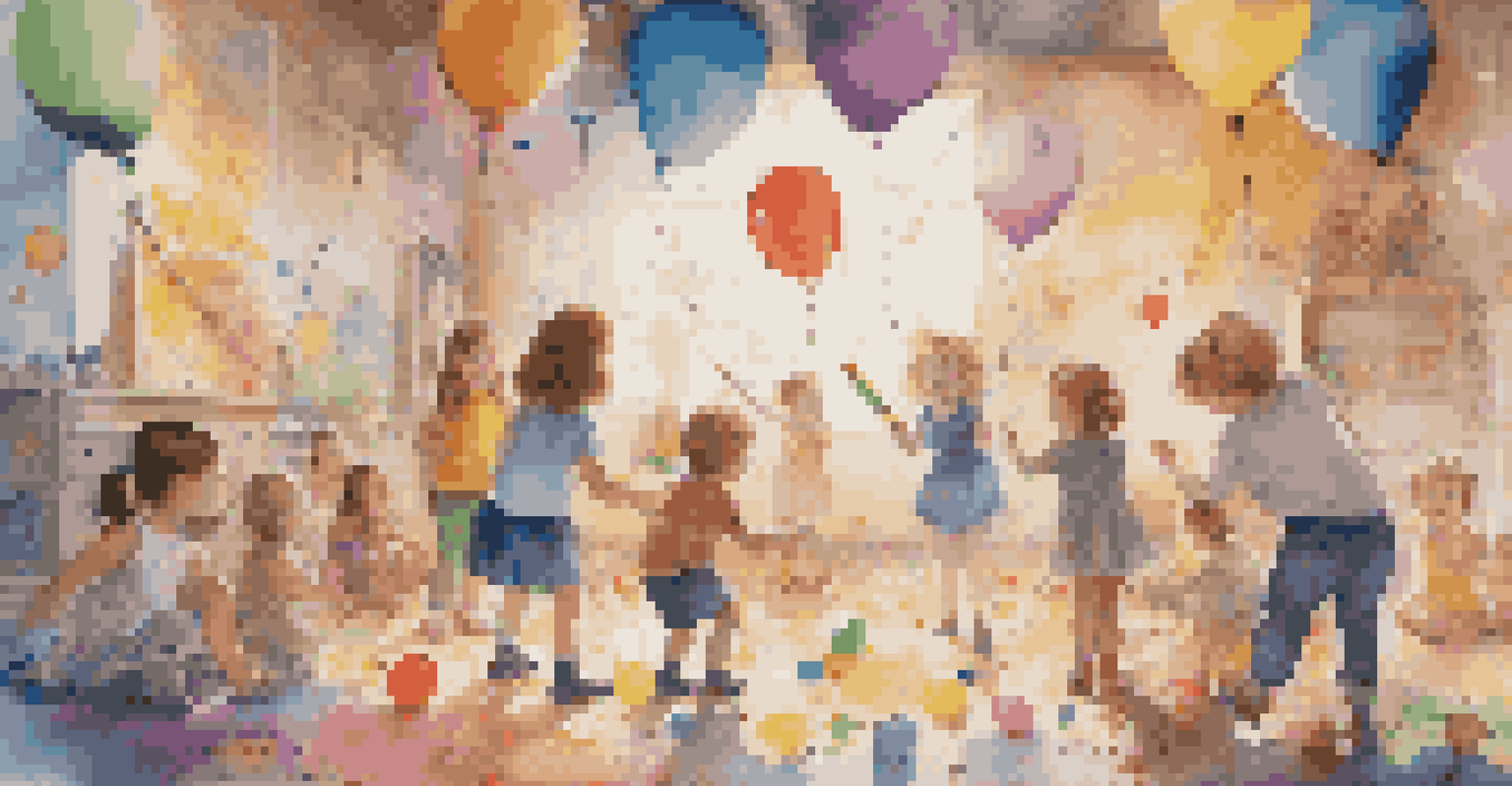Playfulness and Art: Redefining Boundaries of Creativity

The Essence of Playfulness in Art
Playfulness in art is all about embracing curiosity and spontaneity. It's the spark that ignites creativity, allowing artists to explore new ideas without the pressure of perfection. Just like a child playing with blocks, artists can build, break down, and rebuild their concepts, leading to innovative outcomes.
Every artist dips his brush in his own soul, and paints his own nature into his pictures.
When artists incorporate play into their process, they often find unexpected paths and solutions. This freedom to experiment can lead to unique styles and perspectives, enriching their work. For instance, consider how renowned artists like Pablo Picasso and Wassily Kandinsky used playful techniques to break from traditional forms.
Ultimately, playfulness helps artists connect more deeply with their inner selves and the world around them. It invites joy into the creative process, making art not just a form of expression but a delightful journey of discovery.
Breaking Down Creative Barriers
One of the greatest challenges in art is the fear of failure. Playfulness helps dismantle this fear by encouraging artists to view mistakes as opportunities rather than setbacks. When artists allow themselves to play, they often stumble upon unexpected inspirations that can redefine their artistic boundaries.

For example, consider a painter who spills paint on their canvas. Instead of seeing this as a mistake, they might decide to incorporate the spill into their work, leading to a groundbreaking piece. This shift in mindset transforms the creative process from a rigid structure into a fluid exploration.
Playfulness Fuels Artistic Innovation
Embracing playfulness allows artists to explore new ideas and break free from conventional boundaries.
By breaking down these barriers, artists can free themselves from conventional expectations and embrace a more authentic expression of their creativity. As playfulness takes the front seat, the possibilities for artistic exploration become limitless.
The Role of Playfulness in Collaboration
Collaboration can be daunting, especially when artists come from different backgrounds or disciplines. However, introducing playfulness into collaborative projects can ease tensions and foster a creative environment. Think of it as a team-building exercise where everyone is encouraged to contribute their wildest ideas.
Creativity is intelligence having fun.
When collaborators engage in playful activities, they begin to build trust and open lines of communication. This shared experience encourages a flow of ideas that might not emerge in a more formal setting. Imagine a group of musicians jamming together; they often create magic that none of them could have achieved alone.
In this way, playfulness not only enhances individual creativity but also strengthens the bonds between artists. Ultimately, it paves the way for richer, more innovative collaborative works that reflect the unique contributions of each individual.
Art Education: Fostering Playful Creativity
Art education is crucial in shaping the next generation of artists, and incorporating playfulness is key. By encouraging students to experiment and take risks, educators can cultivate an environment where creativity flourishes. This approach helps students understand that art is not just about the final product but also about the joy of creating.
For instance, art classes that emphasize playful exploration—like using unconventional materials or engaging in improvisational exercises—can unlock students' creative potential. When students see art as a playful adventure, they are more likely to take creative risks that lead to personal growth.
Collaboration Thrives on Play
Incorporating playful activities in collaborative art projects fosters trust and enhances creative communication.
Ultimately, integrating playfulness into art education can have lasting effects on students. They carry this spirit into their future endeavors, enriching the art world with fresh perspectives and innovative ideas.
Connecting Playfulness with Emotional Expression
Art has always served as a powerful medium for emotional expression, and playfulness can amplify this connection. When artists approach their work with a sense of fun, they often tap into deeper emotions, resulting in pieces that resonate on a personal level. This authenticity allows viewers to connect with the art in a more meaningful way.
Consider the whimsical works of artists like Jean-Michel Basquiat, who infused their playful style with raw emotion. Their art invites viewers to explore complex feelings and narratives, all while enjoying the vibrant visual experience. This interplay between play and emotion creates a rich tapestry of artistic expression.
By embracing playfulness, artists can break free from self-imposed constraints and explore their emotional landscapes more fully. This journey not only benefits the artist but also enriches the audience's experience, creating a shared emotional connection.
Playfulness as a Tool for Innovation
In today's fast-paced world, innovation is essential, and playfulness can be a powerful tool in this pursuit. Many groundbreaking ideas emerge from a playful mindset, where the focus is on exploration rather than strict outcomes. This approach encourages thinking outside the box, leading to innovative artistic solutions.
For example, the integration of technology in art—such as digital installations or interactive pieces—often stems from playful experimentation. Artists who are willing to play with new mediums can create works that challenge traditional notions of art, opening up new avenues for audience engagement.
Art Education Benefits from Play
Integrating playfulness in art education encourages students to take risks and enhances their creative growth.
Ultimately, fostering a playful approach in the creative process can lead to revolutionary ideas that push the boundaries of what art can be. This spirit of innovation not only transforms individual practices but also influences the wider art community.
The Lasting Impact of Playfulness on Art
The influence of playfulness in art extends far beyond individual works; it can reshape entire movements and genres. From Dadaism's absurdity to Surrealism's dreamlike qualities, playful experimentation has consistently pushed the boundaries of artistic expression. These movements remind us that art is often a reflection of the playful spirit inherent in human nature.
Moreover, as audiences become more aware of the role of play in art, they may begin to seek out works that embody this spirit. This shift can lead to a greater appreciation for innovative, boundary-pushing pieces that challenge conventional norms.

In conclusion, playfulness serves as a catalyst for artistic evolution, encouraging artists to explore, collaborate, and innovate. By embracing this playful spirit, the art world can continue to thrive and inspire future generations.